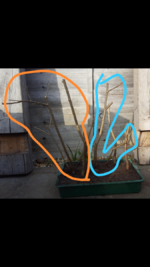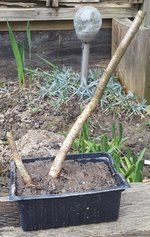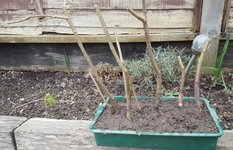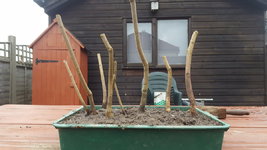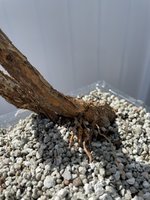Some tree species make much better bonsai than other tree species. If you knew what species you were collecting, you would know whether you are collecting something easy to work with or something more difficult to work with. Not a big deal, you can always figure out what you have later. In the future, taking the time to learn your local trees by their bark and twigs can allow you to collect more desirable material. For example, virtually all species of elm (Ulmus) and hornbeam (Carpinus) make excellent bonsai. Only certain species of maple make good bonsai, with Acer palmatum, the Japanese maple being the best maple for bonsai. IF you accidentally collect Acer pseudoplatanus, the sycamore maple, you will have a very difficult time creating believable bonsai with it. So in the future, take the time to learn to identify your local trees and shrubs.
All of your collected trees have been left rather tall. As a general guide, when you collect trunks, if the trunk does not have much taper, which is your case, you should shorten the trunks to less than half the height of the future tree you envision. All your trunks seem rather tall. It would not hurt to chop them lower before they start leafing out. When you cut them to roughly half the height you envision for you finished tree, the buds, and branches will sprout lower on your trunk. A loose general guide for a generic bonsai is the first third of its height is the trunk, the second third is its main branching, the final third of the height is fine twigs and leaves. This is a "generic" deciduous tree plan. Cutting lower, to half or less than your prefered final height, a greater percentage of the buds to pop have a chance to be in the right area of the trunk to make your primary branching.
In addition, especially in your forest planting, the largest diameter trunk should be the tallest. The smaller the diameter of the trunk the shorter the trunk should be. Your branches you can think of as sub-trunks for this purpose. So rank your trunks by diameter, then shorten the smaller diameter trunks.
Where you have just 2 trunks in one pot, one should be dominant and one should be secondary. The dominant always is the larger diameter trunk. The secondary is the smaller diameter. The secondary should be approximately two thirds or one third the height of the dominant. Never exactly half the height of the dominant. Here for your 2 trunk pot, shorten the secondary trunk. IF diameters are close, then the secondary should be two thirds, if the diameters are wildly different then the secondary should be one third the height.
So if I were you, I would shorten trunks, making the smallest diameter trunks and branches the shortest, and leave nothing taller than half the height of the largest tree you would want as bonsai.



